By Dr. Ashley Miller and Dr. Linda Uyeda on May 12, 2021
As I started to understand that this pandemic would wear on, I had to figure out how to help my patients’ families and my own family navigate our way through this totally new reality. I drew on the science of attachment, resilience and healthy relationships to make a plan. (Please stay tuned for Article #3!)
By Dr. Linda Uyeda and Dr. Ashley Miller on March 3, 2021
(Please stay tuned for Article #2: ‘Parenting during a pandemic’. We will expand on how to nurture these secure attachments with our children.) By Dr. Linda Uyeda (biography and disclosures) and Dr. Ashley Miller (biography and disclosures) (Members of the Child and Youth Mental Health and Substance Use Community of Practice and the Working Group […]
By Drs. Raymond Mak and Tiffany Wong on January 27, 2021
Between 5% to 10% of the population reports an allergy to penicillin. After careful assessment, over 90% of these individuals are found to carry a false allergy label. Having a penicillin allergy label carries many potential harms, including prolonged hospital stays, increased patient costs, risk of more side effects, and an increase in resistant organisms. As such, penicillin allergy has become a major public health concern.
By Dr. Susan Woolhouse on February 26, 2020
My past experiences during my palliative care rotations reassured me that children could benefit from bearing witness to a loved one’s death. Why would MAID be any different? I set out to learn more about how children grieve and ways in which I could support children through the dying of a loved one seeking MAID.
By Dr. Tahmeena Ali on August 21, 2019
I now ask all patients, young and old, new to my practice and established for years, male and female, to complete an ACEs questionnaire in my clinic. I garner a new level of respect for my patients’ resilience and for the ongoing turmoil many of my young patients face. I make finding supports for these young vulnerable patients one of my top priorities—as important as a referral to a specialist or for diagnostic imaging.
By Dr. Min S. Phang, MRCP, FRCPC and Stacey Miller, PT on June 13, 2018
I now refer all children with cerebral palsy, or suspected cerebral palsy, to the Child Health BC Hip Surveillance Program. Information about the program is available at www.childhealthbc.ca/hips, including a referral form for physicians. The incidence of hip dislocations can be significantly reduced!
By Dr. Laura Sauvé on February 7, 2018
Vaccines are safe, but sometimes adverse events following immunizations do happen, and can be very concerning to families. If your patient has an AEFI, there is a voluntary reporting system. Public Health Officers in your local Health Authority will be able to answer most questions or concerns.
By Dr. Anne Antrim on July 18, 2017
The current definition of Autism Spectrum Disorder has 2 criteria: “persistent impairment in reciprocal social communication and social interactions” AND “restricted, repetitive patterns of behavior”. The symptoms must be present from early childhood, but may not manifest till the social demands exceed the capacity of the child to respond.
By Dr. Joseph Lam on January 10, 2017
Pyogenic granulomas or lobular capillary hemangiomas are common acquired vascular tumors accounting for 0.5% of all skin nodules in children. They occur predominantly on the head and neck. Although they are benign vascular proliferations, treatment is often sought because of recurrent episodes of bleeding due to a propensity to superficial ulceration and bleeding.
By Dr. Joseph Lam on October 25, 2016
Pyogenic granulomas or lobular capillary hemangiomas are common acquired vascular tumors accounting for 0.5% of all skin nodules in children. Although they are benign vascular proliferations, treatment is often sought because of recurrent episodes of bleeding due to a propensity to superficial ulceration and bleeding.
By Dr. Alisa Lipson on September 28, 2016
As a general pediatrician, I see many children whose behaviour and/or development is not emerging as expected. A diagnosis such as autism or learning disability may be the obvious explanation; but frequently it is not so straightforward. Parents come armed with questions about ‘processing disorders’ and and they expect their MD to be knowledgeable.
By Dr. Soren Gantt on June 8, 2016
Approximately 1 out of every 150 live-born infants has congenital CMV infection (cCMV). Of these, most are asymptomatic. However, more than 20% will suffer permanent neurologic sequelae, including hearing loss, intellectual disability, and visual deficits. In fact, cCMV is responsible for 25% of all childhood hearing loss, and is the second most common cause of intellectual disability after Down syndrome.
By Kishore Mulpuri on January 20, 2016
Developmental Dysplasia of the Hip (DDH) is a spectrum of hip joint abnormalities ranging from mild dysplasia to severe, frank dislocations. Left untreated, DDH can lead to serious complications later in life including osteoarthritis of the hip and total hip replacement.
By Dr. Paul Thiessen on November 18, 2015
What changed my practice was this simple new technique reported in an article from Spain which described a new method to obtain a midstream urine collection in which the infant is held upright and someone rubs over the suprapubic region while gently tapping over the lumbar region of the spine.
By Dr. Antoinette van den Brekel on October 28, 2015
Health care providers caring for pregnant women and newborns are often faced with a finding of fetal hydronephrosis on routine screening antenatal ultrasound; in fact it is seen in 1 to 2% of fetuses screened. Babies at risk of rapidly progressive renal injury due to urinary tract obstruction need to be evaluated and referred for specialized care urgently, prior to discharge from hospital.
By Dr. Clara van Karnebeek and Dr. Sylvia Stockler on July 29, 2015
Affecting 2-3% of Canadians, intellectual disability (ID) is a lifelong, devastating condition defined by deficits in cognitive functioning (IQ<70) and adaptive skills. It is called global developmental disability (GDD) in children less than 5 years of age; it is defined as deficits in 2 or more developmental domains. In Canada, approximately 7,600-11,500 children are born annually with GDD. Identification of GDD or ID in children is the essential first step and often a task for the primary care practitioner.
By Dr. Kourosh Afshar on June 10, 2015
UDT is one of the common causes for referral to Pediatric Urologists. 1-2% of boys have UDT at age of 12 months. UDT is associated with increased risk of malignancy (relative risk 2.75-8).
By Andrea Warnick on April 29, 2015
Serious illness, dying, or death of a family member is one of the most significant life events a child will ever experience. I no longer wait for them to share their concerns and questions with me. I invite questions and address the grief.
By Dr. Alisa Lipson on September 30, 2014
Autism rare? Not so now. The current prevalence is a staggering 1 in 68, about four times as common as type 1 diabetes, with a male to female ratio of 5:1.
By Dr. Keyvan Hadad on September 2, 2014
Congenital heart defects account for more newborn deaths than any other type of congenital defect, representing up to 40% of all deaths from congenital defects and 3–7·5% of all infant deaths.
By Dr. Keyvan Hadad on November 18, 2013
Hip dysplasia can lead to degenerative hip disease and is a leading cause of early arthritis of the hip. Risk factors for this condition include female gender, breech delivery and positive family history. Some recent data has shown a significant increase in the prevalence of this condition.
By Dr. Ran Goldman on January 21, 2013
Acute limping is a very common chief complaint among children visiting a clinic. When children with a limp present to you, always consider the possibility of septic arthritis. How can one differentiate between transient synovitis and septic arthritis?
By Dr. Laura Sauvé on November 5, 2012
Rotavirus vaccines can prevent important morbidity for young infants, and the associated physician visits, emergency department visits, hospitalizations and related parental stress and missed work days due to rotavirus infection.
By Dr. Ran Goldman on June 18, 2012
With advances in computer based gaming, safety concerns and sedentary life style of today’s families, children have been significantly less active.
By Dr. James Bergman on March 5, 2012
At present, for hemangiomas patients who I feel need systemic therapy I personally use oral Propanolol instead of systemic steroids, as I believe that the benefit risk analysis presently favours Propanolol.
By Dr. Paul Thiessen on November 22, 2011
Upper respiratory infections are the most common illnesses seen in childhood, and the symptoms are often disruptive for both the child and the whole family.
By Dr. Anne Antrim on January 31, 2011
NICU experience has a profound effect on children and their families. As caregivers, we need to specifically ask about potential issues and offer advocacy for these families in the community and in the schools.
By Dr. Ken Seethram on November 15, 2010
The European experience shows that multiple ultrasound markers, serum, and anatomical survey of the fetus could be conducted in the period around 12 weeks, and that this information is much stronger in detecting genetic syndromes than 2nd trimester markers.
By Dr. Edmond Chan on September 7, 2010
“There is no convincing evidence that delayed introduction of food proteins such as peanut beyond 4 to 6 months of life has any benefit in allergy prevention”









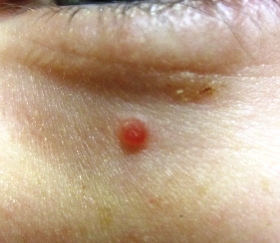

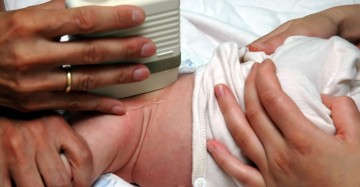

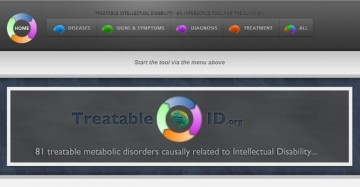


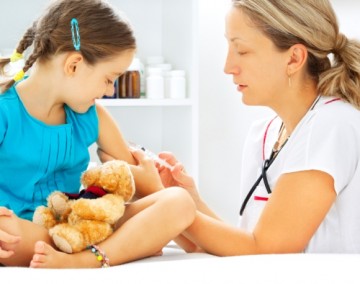
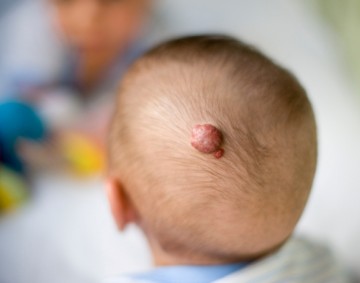

Recent Comments